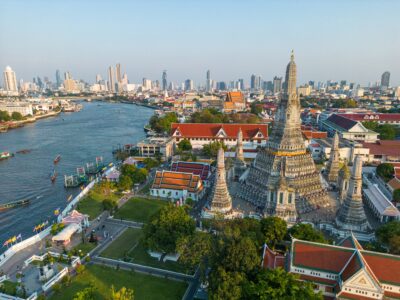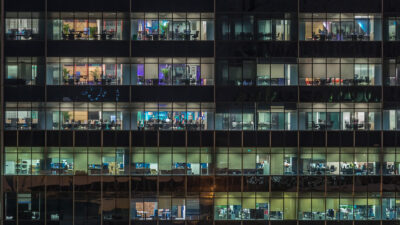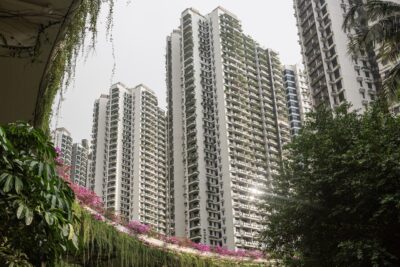Walking back to happiness
Major urban centres are getting back on their own two feet
A city’s walkability is becoming an increasingly significant driver of property investment, as a growing demographic prefer to live, work and move around in sustainable and livable urban environments.
According to a new study conducted by the Center for Real Estate and Urban Analysis (CREUA) at George Washington University in the United States in collaboration with Smart Growth America, a rising number of metropolitan areas are realising the importance of walkable spaces and their positive impact on real estate values.

“Walkability translates into ease of commuting and having convenient access to retail shops and restaurants, which translates into price premiums,” said research professor of urban real estate and CREUA chairman, Professor Christopher B. Leinberger, who also co-authored the Foot Traffic Ahead: Ranking Walkable Urbanism in America’s Largest Metros report.
Citing Washington DC and New York City as the two most walkable metropolitan areas in the US, the report highlights the economic potential of districts and recommend they concentrate on expanding their existing walkable districts to benefit residents and visitors.
“In the US, the pent-up demand is definitely for walkable urban residential product,” Leinberger said. “The price premiums on a per square metre basis for walkable urban product is 40 to 200 percent higher than comparable drivable suburban product in many metropolitan areas. The major reason for this price premium is due to land prices; America does not have enough walkable urban land so that inflates housing prices.”
Asian cities such Tokyo, Singapore and Hong Kong—which, like New York City, densely populated, land-scarce and are home to some of the world’s most expensive real estate—already have a reputation for being pedestrian-friendly. But many other major urban centres in the region, whether due to poor infrastructure or a lack of urban planning, can be difficult to navigate on foot and seemingly there’s a long way to go before the concept of walkability gains traction in these destinations.
“There are a number of factors that probably determine why walkability is not a significant trend here: pollution, the aspirational status of owning a car, planning systems that are not as developed as the West, rapid urbanisation (pushing cities outwards) and high humidity and temperatures, especially in Southeast Asia,” commented Singapore-based Nicholas Holt, Asia Pacific head of research at Knight Frank.
Holt added that although a highly urbanised metropolis like Singapore has many navigable streets and modern neighbourhoods designed for pedestrians, the sub-tropical climate there might not always be conducive to walking as, say, urban areas in the US or Europe. “Walkability in terms of access to transport nodes is probably more of a key market driver in many parts of Asia.”
Nevertheless, some developers in Asia’s emerging global cities, Jakarta and Manila, and to a lesser extent Ho Chi Minh City, have started to factor in walkability in their latest urban projects.
“In some of these cities, there are pockets of new township developments, such as Bonifacio Global City in Manila, or Phu My Hung in Ho Chi Minh City, that are relatively more pedestrian-friendly, with more spacious walkways and more organised traffic flow than compared to the rest of the city—having had the benefit of being planned from the ground up,” Cushman & Wakefield managing director for Asia Pacific research Sigrid Zialcita said.
One of the owners and developers of the bustling Bonifacio Global City, Ayala Land recognises its consumers’ preference for walkable developments. Recently the Philippine developer announced plans to replicate its ‘Global City’ success in a new, large-scale development at the 74-hectare, master-planned township in southern Metro Manila, dubbed ‘Arca South’, which will be characterised by its dynamic and organic living environment.
Yet, experts note that creating a truly walkable neighbourhood involves extensive urban planning and execution over time, as well as other considerations.
“This is more than just having enough shops and amenities within walking distance. There are several other factors that affect if an area is walkable or not,” according to Adam Davies, founder of United Kingdom-based start-up Walkonomics, which developed a mobile application of the same name that determines a location’s pedestrian-friendly features.
“For instance, how easy is it to cross each street? Are there a lot of steep hills and are the streets beautiful and clean? Is it safe to walk or are you likely to be a victim of crime? ‘Fear of crime’ is one of the factors that Walkonomics measures and our research shows that new home buyers value this in a property,” Davies explained. “Another study in the UK showed that improving the walkability of a street—including features that discourage crime—can add as much as GBP30,000 (USD47,000) to a home’s value.”
Tapping into the growing interest for walkable products, developer Dubai Holding recently announced plans to develop a 743,000 sqm, temperature-controlled, integrated pedestrian complex called ‘Mall of the World’. Set to be located on the outskirts of Dubai, the enclosed, mixed-use development, which will comprise commercial, retail, hospitality and residential components, is more like a small city that could embody the concept of walkable urbanism in the future.
“Dubai is a remarkable experiment in ‘green field’ real estate development, building where nothing had been built in the past, as well as ‘brown field’ redevelopment, where obsolete structures are removed and new high density is built in its place,” Professor Leinberger noted.
“The challenge in Dubai is creating the street life needed for a great walkable urban place to emerge, like Mayfair in London or the left bank in Paris. Much of the new developments have been inward facing and not pedestrian-friendly,” he said. “On the other hand, Rome was not built in a day. Great walkable urbanism takes time and a layering of complexity over many generations.”
Whilst the Emirate can accommodate and sustain an ambitious development such as Dubai Holding’s futuristic city, other Asian cities do not have the capacity. Instead, simpler and significantly less expensive schemes exist elsewhere to improve walkable urbanism and allow residents to breathe, such as Jakarta’s car-less day programme, which aims to promote a healthier urban lifestyle via walking or biking, and reduce the congested city’s reliance on motor vehicles.
Professor Leinberger stresses that, although walkable cities would probably be positioned for a high level of success in these rankings and enjoy better price premiums for real estate in the long run, a balance is necessary and “metropolitan areas need to offer a choice,” because walkable urbanism is not for every segment of the property market and demand varies around the world.
“In the walkable urban places, every conceivable transportation conveyance needs to be offered to get one to the place, but once you are there, it should be walkable,” he said. ”If walkable urban places do not exist, then the metropolitan area is only satisfying one market type: drivable suburban. It is important to offer both walkable urban and drivable suburban to the market place.”
Still, he adds: “The heart and soul of the metro area is generally in the walkable urban places.”
Recommended
Meet the vagabond architect behind India’s housing scene
Vinu Daniel is helping to shake up India’s home building setting
Where Asian real estate stands in a fragmented, warmer world
Asia’s real estate industry faces many and varied challenges as external factors continue to bite
6 sights to see in Singapore’s Marine Parade
Handily located Marine Parade has emerged as a vibrant investment choice in the Lion City
There’s a township dedicated to health and wellness in Malaysia
Property seekers have their health needs catered for at KL Wellness City








